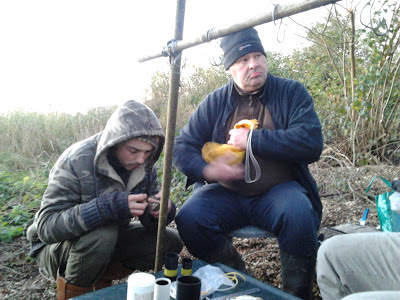The wet marshy habitats across Europe and Africa (and probably the world) are similar in lots of ways. They are all usually wet, smelly and jam packed full of blood sucking invertebrates. They will all usually support a range of specialist wetland passerines (and "near passerines") in some form or another.
 |
| A "near passerine" |
When you spend much of your working week standing in damp waders,
putting up and taking down mist nets, attempting to distinguish chironomidae from dixidae between the occasions when you catch a study
bird species in order to collect its "dietary waste"- you gain a sort of insight to some of the differences between
marshy wet habitats.
 |
| Always smiling |
For example, some of these habitats carry less risk of contracting a
party list of liver or blood-cell parasites. Some are not surrounded by
hundreds of miles of Sahelian arid habitats. Some of them are within a
wine-growing country -where you can enjoy the local produce at the end
of yet another sunny day after day after day.
But one of the main ways they differ is in the variety and quantity of birds you might encounter. For example, as you get further south you might encounter a 'zitting cisticola' or fan-tailed warbler.
or perhaps a Little Bittern or two.
 |
| Yes it is very sharp and 'jabby' |
And a steady netful of introduced species from Africa.
 |
| Waxbill |
and some typical European migrants.
 |
| Now what was this one again.. something 'throat' |
 |
| fliedpycatcher |
After a full season of catching reed warblers in South Wales- what more could I wish for than a research trip to Portugal to catch some more reed warblers. Suffice to say I coped...











